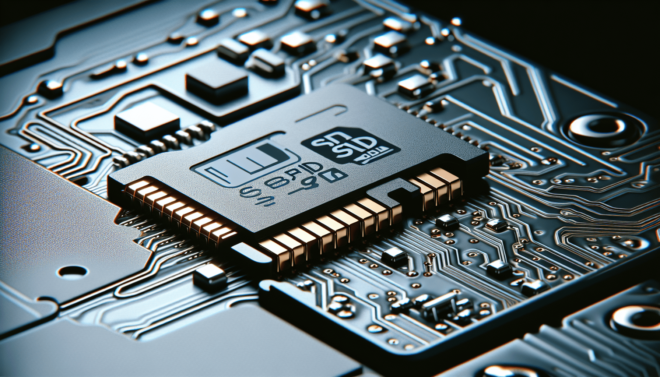How Can I Improve Playback Performance For DJI 4K Footage In DaVinci Resolve?
Have you been working with DJI 4K footage in DaVinci Resolve and experiencing playback performance issues? Don’t worry, you’re not alone. In this article, we’ll explore some tips and tricks to help you improve the playback performance of your DJI 4K footage in DaVinci Resolve. Let’s dive in!
Check Your System Requirements
Before we delve into specific solutions, it’s essential to ensure that your system meets the minimum requirements to handle 4K footage in DaVinci Resolve. Check the official Blackmagic Design website for the recommended system specifications and make sure your computer meets or exceeds them.
What To Do:
Check your system requirements by visiting the Blackmagic Design website. Make sure your computer meets or exceeds the recommended specifications. Upgrade your hardware if necessary to ensure smooth playback performance.
Optimize Project Settings
Optimizing your project settings in DaVinci Resolve can significantly impact the playback performance of your DJI 4K footage. By adjusting settings like playback resolution, proxy mode, and cache settings, you can enhance the overall editing experience.
What To Do:
Lower the playback resolution to reduce the strain on your system. Enable proxy mode to generate lower-resolution proxy files for smoother playback. Adjust cache settings to allocate more memory for caching preview files.
Utilize Smart Caching
Smart caching is a feature in DaVinci Resolve that allows you to pre-cache portions of your timeline for smoother playback. By utilizing smart caching strategically, you can improve the overall playback performance of your DJI 4K footage and optimize your editing workflow.
What To Do:
Enable smart caching in DaVinci Resolve preferences. Set the cache levels and duration based on your system’s capabilities. Monitor cache usage and adjust settings as needed for optimal performance.
Use Optimized Media Formats
Choosing optimized media formats for your DJI 4K footage can make a significant difference in playback performance. By converting your files to formats that are more efficient for editing in DaVinci Resolve, you can reduce stuttering and lag during playback.
What To Do:
Convert your DJI 4K footage to optimized media formats like ProRes or DNxHR. Use a third-party transcoding tool to batch convert your files for smoother editing. Import optimized media formats into your project for improved playback performance.
Update DaVinci Resolve and GPU Drivers
Keeping your DaVinci Resolve software and GPU drivers up to date is crucial for optimal performance when editing DJI 4K footage. New updates often include enhancements that improve stability, performance, and compatibility with various hardware configurations.
What To Do:
Regularly check for updates to DaVinci Resolve on the Blackmagic Design website. Update your GPU drivers to the latest version compatible with DaVinci Resolve. Monitor release notes for bug fixes and performance enhancements related to playback.
Manage Timeline Complexity
Complex timelines with multiple effects, transitions, and overlays can strain your system and impact playback performance. By managing timeline complexity and optimizing your editing workflow, you can streamline the editing process and improve playback efficiency.
What To Do:
Consolidate and nest sequences to simplify complex timelines. Reduce the number of effects and transitions applied to clips for smoother playback. Use adjustment layers to apply effects globally and minimize resource usage.
Utilize GPU Acceleration
GPU acceleration can significantly boost playback performance when working with DJI 4K footage in DaVinci Resolve. By offloading processing tasks to your GPU, you can leverage its parallel processing power to enhance editing performance and reduce render times.
What To Do:
Enable GPU acceleration in DaVinci Resolve preferences. Select the appropriate GPU processing mode based on your graphics card. Monitor GPU usage and optimize settings for maximum performance.
Monitor System Resources
Monitoring system resources like CPU, GPU, RAM, and storage can help you identify performance bottlenecks and optimize your hardware for editing DJI 4K footage. By keeping an eye on resource usage, you can make informed decisions to improve playback performance.
What To Do:
Use built-in system monitoring tools or third-party applications to track resource usage. Identify processes that are consuming the most resources during playback. Close unnecessary background applications and optimize system resources for DaVinci Resolve.
Create Optimized Render Settings
Optimizing your render settings in DaVinci Resolve can improve playback performance by reducing the strain on your system during preview and export. By choosing the right settings for your output format, resolution, and codec, you can enhance the overall editing experience.
What To Do:
Select optimized render settings based on your intended output format and resolution. Choose a high-quality codec like ProRes or DNxHR for better playback performance. Adjust bitrate, frame rate, and other parameters for optimal rendering and playback.
Troubleshoot Performance Issues
If you’re still experiencing playback performance issues with your DJI 4K footage in DaVinci Resolve, troubleshooting common problems can help identify and resolve underlying issues. By troubleshooting step by step, you can pinpoint the root cause of performance issues and implement effective solutions.
What To Do:
Identify specific playback issues like stuttering, lag, or freezes. Check system logs and error messages for clues to performance problems. Troubleshoot hardware, software, and configuration issues systematically to find the solution.
In conclusion, improving playback performance for DJI 4K footage in DaVinci Resolve requires a combination of optimizing settings, managing resources, and troubleshooting issues. By following the tips and tricks outlined in this article, you can enhance the editing experience and achieve smoother playback of your 4K projects. Keep experimenting with different techniques and settings to find the best solution that works for your workflow. Happy editing!

